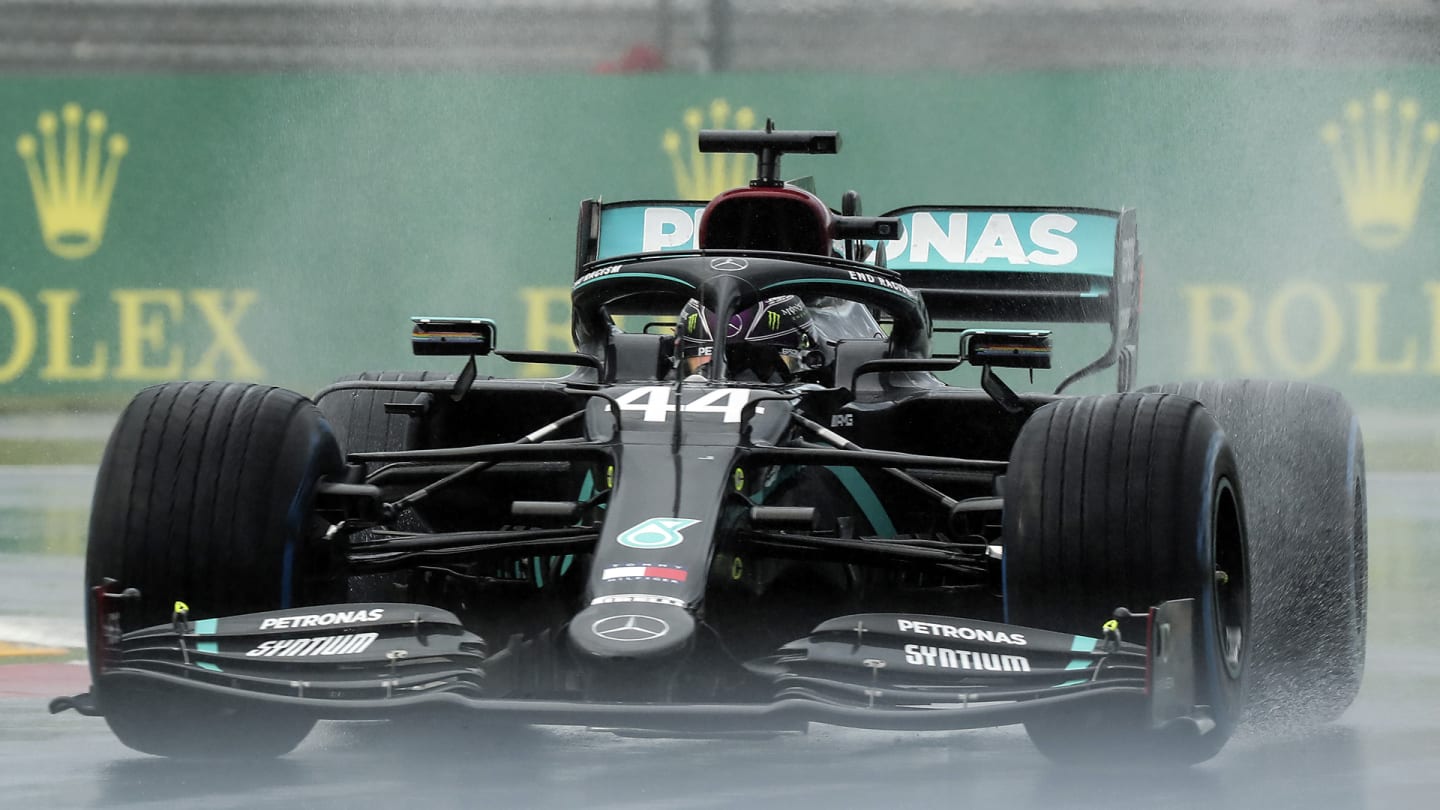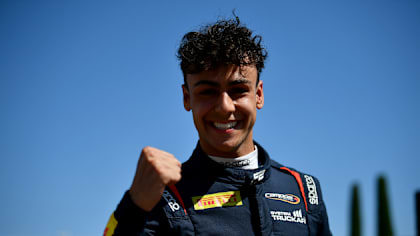
30 May - 01 June
Technical
TECH TUESDAY: Last time F1 went to Turkey, Mercedes were 5s off the pace in qualifying – but why?

Share

As F1 heads for Istanbul it’s a good time to recall the bizarre circumstances of last year’s event, where the two Mercedes qualified five seconds adrift of the pole-sitting Lance Stroll, and where Lewis Hamilton was initially five seconds slower than the leaders in the race but came through to win by over half-a-minute.
It was all to do with tyre performance and the temperature threshold. Is it possible we could see something similar this weekend? Maybe not, as the race is a vital few weeks earlier in the year, there’s a good chance it will be dry and the track surface has now been down for a year rather than 10 days, as was the case last year.
WATCH: Stroll on pole, Lap 1 spins and Hamilton's seventh title – Relive the 2020 Turkish Grand Prix
But those 2020 circumstances did lay bare the mechanisms by which the tyres work – and they are always relevant to understanding differing performance patterns between cars, and at different stages of the race weekend.
The tyres need to be in their temperature working window (typically 90-120 degrees C) to even begin functioning properly. Under normal circumstances, this is achieved as the cornering and braking loads are applied on the out-lap from the pits, and the tyres are at or close to their ideal temperature by the start of the first flying lap.
But if the track is too gripless to put good cornering or braking loads into the tyre, they can remain outside of that threshold and it becomes a vicious spiral: the tyre with insufficient grip to generate adequate loads and thereby remaining cold and thereby unable to generate grip, and so on.
Relive last year's race - Turkish Grand Prix 2020 highlights
As Mercedes’ Andrew Shovlin explained after last year’s event, “The thing with tyres and tyre temperature issues, when you're cold, is that two or three degrees can make the difference between getting them working, generating the grip and the temperatures going up or just on that cold side where the rubber becomes like plastic and it's got no grip, and it just gets colder and colder.
“You don't need to do a lot to go from one phase into the other.”
The difference in lap time between a tyre in this cold ‘plastic’ state and one at the correct temperature will be whole chunks of seconds, not merely tenths. Just the slightest input to get that rubber across the temperature threshold – and it will suddenly switch on.
It’s not a progressive scale, but switch-like. Hence just the slightest difference in weight distribution or suspension geometry or aerodynamic performance or the way the brake temperatures are fed into the wheelrim can easily make the difference between vying for pole and being five or more seconds off the pace – as Mercedes found last year.
ONBOARD: Lance Stroll's 2020 Pirelli pole position lap at Turkish GP
This pattern was repeated on both the wet and the intermediate tyre in both qualifying and race. The Racing Points were able to quickly get the tyre past that temperature threshold, typically within a lap.
The Red Bull was taking a couple of laps before the rubber switched on – but the Mercedes needed as many as seven laps before it wasn’t whole seconds off the pace. Seven consecutive laps isn’t a luxury that can be afforded in qualifying. But eventually on race day, Hamilton’s tyres finally reached that magical switch point of temperature.
READ MORE: Pat Symonds on how Formula 1 are creating the next generation of 100% sustainable fuels
From that point on, he was generally the fastest man on track. Furthermore, because those initial slow laps had not taken much rubber from the tyre, he was able to do the race with one stop less than the initial front runners, the Racing Points and Red Bulls.
To understand why the tyre performance can vary so wildly according to its temperature, it’s necessary to look at the mechanism by which it generates grip. This applies to all tyres: slicks, inters or wets. There is the ‘mechanical’ grip in which the tyre’s contact patch grabs hold of the track surface and the ‘chemical’ grip whereby it bonds to the surface at a molecular level.

Hamilton just couldn't get his tyres into the correct operating window in qualifying in Turkey last year
Because rubber is visco-elastic, it doesn’t react in a linear way to loads. Up to a point, it will accept the incoming energy of the cornering loads and react against it by springing back in the opposite direction.
That resistance from the springing action is what generates the grip. The speed at which that load/reaction mechanism is happening is known as the contact frequency.
READ MORE: Turkish Grand Prix voted as best race of 2020
A soft compound will generate good chemical bonding with the track surface and thereby allow this process to be stronger – but only up to a point. If the loads become too high for that compound, the contact frequency overwhelms the ability of the rubber to accept the incoming loads. It cannot bend quickly enough.
Hence tracks generating greater loads require a harder compound. As the tyre accepts the loads, the energy is absorbed and that creates heat. As the temperature of the tyre increases, the rubber becomes softer. But as the contact frequency increases it becomes harder.

Lance Stroll was in superb form – and was able to get his tyres working – to secure his first pole position in Turkey last year
So those two mechanisms are working in opposite directions and there will be a sweet spot, an ideal combination of temperature and compound softness at which compound and contact frequency are in equilibrium. This is called the ‘vitreous transition’ and it’s where tyre engineers are trying to keep the tyre.
If the track surface is oily, the contact frequency reduces, the temperature is not reached, the tyre remains hard and relatively inelastic and neither the chemical bonding nor the mechanical grip mechanisms can be triggered.
These mechanisms are happening all the time, but the extreme conditions of Istanbul last year just made them more visible. Let’s see what the track has in store this weekend…
YOU MIGHT ALSO LIKE
Report F2: Lindblad in scintillating form as he takes maiden pole in Barcelona
News ‘I hope it will be a bit more similar to Imola’ – Verstappen hopeful he can bounce back from Monaco disappointment in Spain
Live Blog AS IT HAPPENED: Follow all the action from first practice for the Spanish Grand Prix
News Russell ‘in a good place’ after ‘decent’ Friday for Mercedes in Spain despite concern over long-run pace








